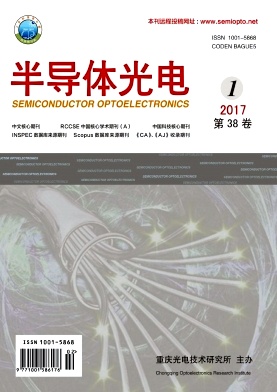半导体光电, 2017, 38 (1): 1, 网络出版: 2017-03-29
CMOS图像传感器总剂量辐照效应及加固技术研究进展
Progress of Total Ionizing Dose Radiation Effects and Hardening Technology of CMOS Image Sensors
CMOS图像传感器 总剂量效应 辐照损伤 抗辐射加固技术 CMOS image sensor total ionizing dose radiation effects radiation damage radiation hardening technology
摘要
CMOS图像传感器(CIS)在空间辐射或核辐射环境中应用时, 均会受到总剂量辐照损伤的影响, 严重时甚至导致器件功能失效。文章从微米、超深亚微米到纳米尺度的不同CIS生产工艺、从3T PD(Photodiode)到4T PPD(Pinned Photodiode)的不同CIS像元结构、从局部氧化物隔离技术(LOCOS)到浅槽隔离(STI)的不同CIS隔离氧化层等方面, 综述了CIS总剂量辐照效应研究进展。从CIS器件工艺结构、工作模式和读出电路加固设计等方面简要介绍了CIS抗辐射加固技术研究进展。分析总结了目前CIS总剂量辐照效应及加固技术研究中亟待解决的关键技术问题, 为今后深入开展相关研究提供理论指导。
Abstract
CMOS image sensor (CIS) used in the space or nuclear radiation environments will be susceptible to the total ionizing dose (TID) radiation damage, which can even induce the CIS functional failure. In this paper, the TID radiation effects on the CIS are reviewed by summarizing the investigations from different manufacture technologies including micron, super deep submicron, and nano size, from different pixel structures such as 3T PD (Photodiode) and 4T PPD (Pinned Photodiode) and from different types of isolated oxides such as the local oxidation of silicon (LOCOS) and shall trenh isolation (STI). The investigation progresses of radiation hardening technology on the CIS are briefly introduced by the device structure technology, operation mode, and the readout circuit hardening design. The questions to be further investigated on the TID radiation effects and hardening technology on the CIS are put forward.
王祖军, 刘静, 薛院院, 何宝平, 姚志斌, 盛江坤. CMOS图像传感器总剂量辐照效应及加固技术研究进展[J]. 半导体光电, 2017, 38(1): 1. WANG Zujun, LIU Jing, XUE Yuanyuan, HE Baoping, YAO Zhibin, SHENG Jiangkun. Progress of Total Ionizing Dose Radiation Effects and Hardening Technology of CMOS Image Sensors[J]. Semiconductor Optoelectronics, 2017, 38(1): 1.



